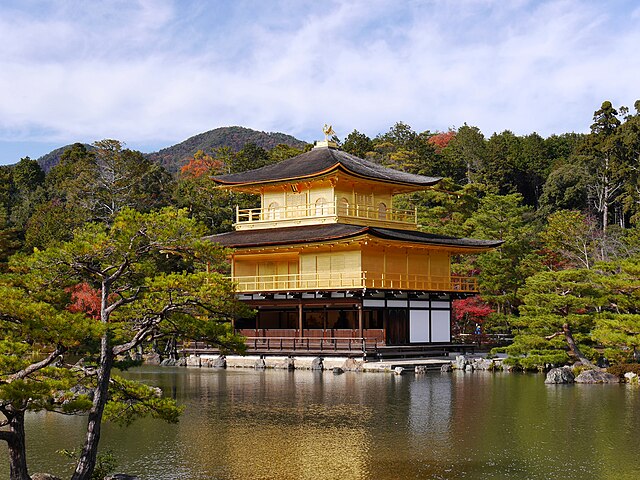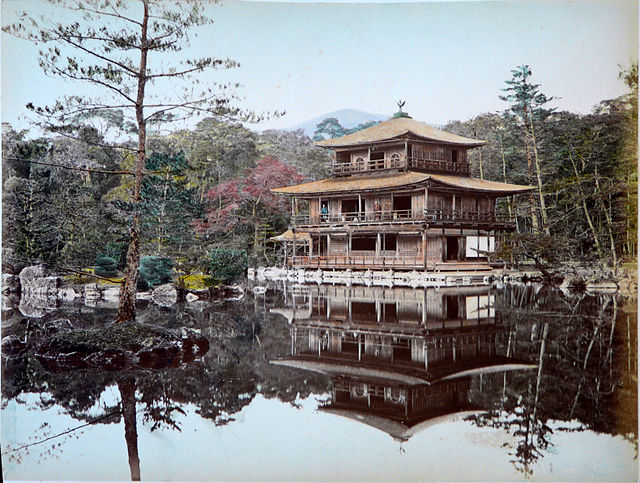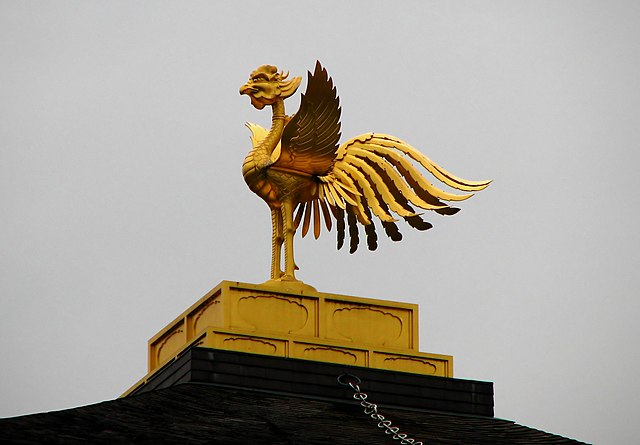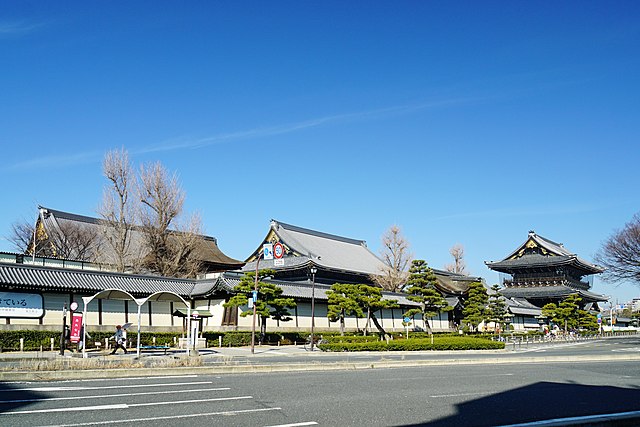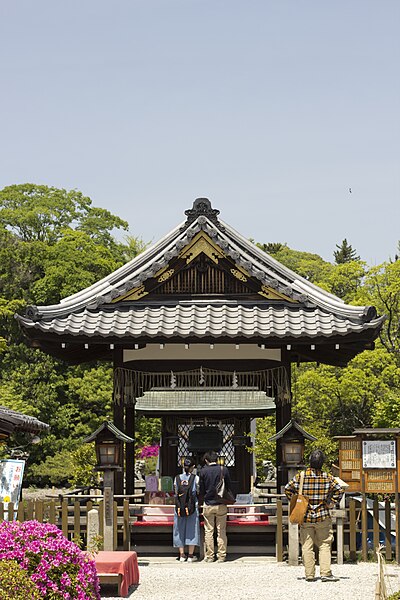Kinkaku-ji , officially named Rokuon-ji , is a Zen Buddhist temple in Kyoto, Japan. It is one of the most popular buildings in Kyoto, attracting many visitors annually. It is designated as a National Special Historic Site, a National Special Landscape and is one of 17 locations making up the Historic Monuments of Ancient Kyoto which are World Heritage Sites.
Kinkaku-ji
Painted photograph of the Golden Pavilion in 1885. The gold leaf is peeling off due to deterioration over time.
Golden Pavilion following the 1950 arson
Roof ornament
Buddhist temples in Japan
Buddhist temples or monasteries are the most numerous, famous, and important religious buildings in Japan. The shogunates or leaders of Japan have made it a priority to update and rebuild Buddhist temples since the Momoyama period. The Japanese word for a Buddhist monastery is tera (寺), and the same kanji also has the pronunciation ji, so temple names frequently end in -dera or -ji. Another ending, -in (院), is normally used to refer to minor temples. Examples of temple names that have these suffixes are Kiyomizu-dera, Enryaku-ji and Kōtoku-in.
Higashi Hongan-ji in Kyoto
A torii at the entrance of Shitennō-ji, a Buddhist temple in Osaka
Honden of the Zennyo Ryūō shrine, inside a Shingon temple in Kyoto
A Buddhist-style gate (karamon) at Iwashimizu Hachiman-gū

